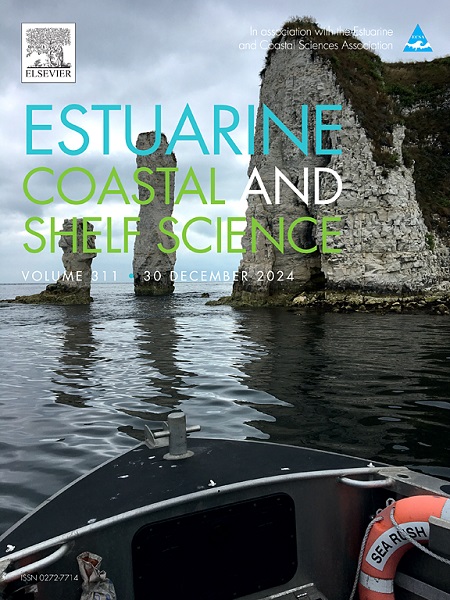An improved approach for retrieval of tidal flat elevation based on inundation frequency
IF 2.6
3区 地球科学
Q1 MARINE & FRESHWATER BIOLOGY
引用次数: 0
Abstract
The tidal inundation frequency method is commonly employed for rapid remote sensing acquisition of large-scale and high-precision tidal flat topography. However, in certain areas of tidal flats, the natural tidal inundation is partially obstructed by artificial structures, resulting in incomplete correspondence between the inundation frequency and the topography. Therefore, this study proposes the frequency-distance joint retrieval (FDJR) approach to improve the tidal inundation frequency method. The FDJR approach derives the local multi-year lowest tidal level line, characterized by an inundation frequency of 1, from the inundation frequency image. It further incorporates the landward distance between this line and the tidal flat point into the regression model, thereby effectively capturing the overall monotonic variation in the elevation of the tidal flat profile. Taking the Yellow River Delta (YRD) as an example, the retrieval of tidal flat topography was conducted by integrating Sentinel-2 remote sensing images, ICESat-2, ATL08 elevation products and RTK measured terrain. The results show that there exists a high correlation among the landward distance, inundation frequency and elevation. Moreover, the machine learning regression model based on Random Forest and Bagging algorithm effectively characterizes this relationship. Compared with the tidal inundation frequency method, the proposed approach achieves an increase in training accuracy of approximately 30 %-40 % while providing more concentrated retrieval elevation distribution with smoother kernel density curves. The FDJR approach proves applicable to the tidal flats where natural tide inundation is partially obstructed and provides topographic reference for coastal zone studies.
求助全文
约1分钟内获得全文
求助全文
来源期刊
CiteScore
5.60
自引率
7.10%
发文量
374
审稿时长
9 months
期刊介绍:
Estuarine, Coastal and Shelf Science is an international multidisciplinary journal devoted to the analysis of saline water phenomena ranging from the outer edge of the continental shelf to the upper limits of the tidal zone. The journal provides a unique forum, unifying the multidisciplinary approaches to the study of the oceanography of estuaries, coastal zones, and continental shelf seas. It features original research papers, review papers and short communications treating such disciplines as zoology, botany, geology, sedimentology, physical oceanography.

 求助内容:
求助内容: 应助结果提醒方式:
应助结果提醒方式:


